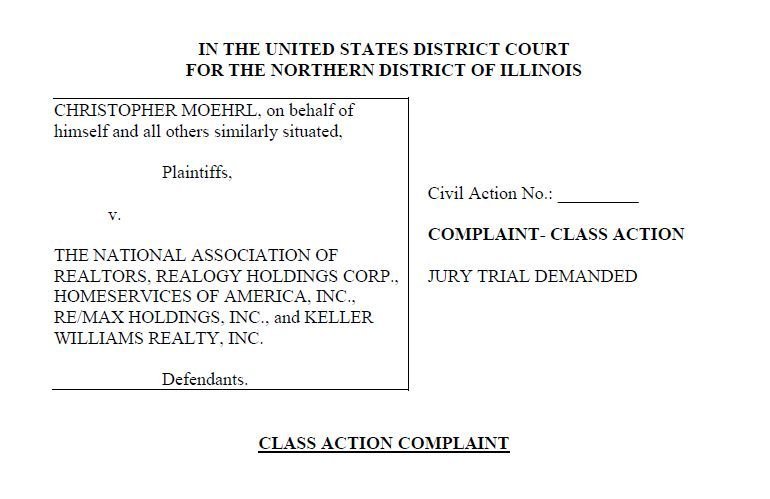Exploring Class Action Claims: What You Need to Know
Course activity lawsuits have ended up being progressively prevalent in today's legal landscape, with people signing up with pressures to look for remedy versus corporations and organizations. In this conversation, we will discover the ins and outs of course activity lawsuits, shedding light on their definition, the requirements for filing, and the potential benefits and downsides entailed.
The Interpretation of Course Activity Legal Actions
A class action legal action is a lawful activity filed by a group of individuals that have similar insurance claims versus an accused. Course action claims are commonly brought when the number of potential complainants is also huge for private lawsuits to be practical.
Among the crucial elements of a class action claim is that the lead plaintiff, also referred to as the class agent, stands for the rate of interests of all the class members. The court assigns the lead plaintiff based on their capability to fairly and sufficiently stand for the class. The lead plaintiff works closely with the class action lawyer to seek and build a strong case payment or other solutions in behalf of the whole course.
In order for a class action lawsuit to proceed, the court should certify the course. This suggests that the court identifies that the claim meets particular requirements, such as numerosity (a large enough variety of class participants), commonality (common questions of legislation or fact), typicality (the insurance claims of the lead complainant are typical of the class), and competence of representation (the lead plaintiff and course guidance can representing the class's rate of interests) Once the course is licensed, the claim can move on, and any kind of judgment or settlement got to will apply to all course members unless they pick to opt-out.
Class activity claims serve a vital objective in offering access to justice for individuals who may not have the sources to seek their claims individually. They additionally advertise efficiency in the lawful system by consolidating similar claims into a solitary activity, lowering the problem on both the court and the parties involved.
Requirements for Filing a Course Action Lawsuit

Another demand is that the course needs to be sufficiently many. The exact number of course participants needed might differ depending upon the territory and the nature of the instance. It is usually anticipated that the course must be huge sufficient that joining all the private plaintiffs right into a single legal action is more effective than having multiple separate claims.
Additionally, it is important that the class rep, that is the private or entity bringing the suit on behalf of the class, has regular claims and defenses to those of the course participants. The agent needs to likewise be able to appropriately and rather stand for the passions of the entire course.

Advantages and Drawbacks of Class Action Suits
Class activity lawsuits offer both benefits and downsides for plaintiffs and offenders included in the lawful procedure. On the one hand, among the considerable benefits of class action suits is that they give a cost-efficient and effective way for individuals with similar cases to seek justice collectively. By combining countless similar cases into one suit, course activities streamline the legal process and save time and sources for both accuseds and plaintiffs.
One more advantage of course activity suits is that they enable people with restricted resources to look for settlement for their damages. In situations where the prospective recuperation is tiny, private claims might not be economically click here to read practical. However, by signing up with forces in a course action, complainants can pool their resources and increase their opportunities of acquiring a fair resolution.
In addition, class actions can advertise social modification by holding firms liable for their actions. By accentuating widespread misbehavior or malfunctioning items, course activities can pressure firms to transform their practices, enhance item safety and security, or execute reforms.
Nonetheless, class activities also have disadvantages. One potential negative aspect is that private plaintiffs may have limited control over the litigation procedure and the best result of the case. The lead plaintiffs and their attorneys generally make crucial choices in support of the whole class, which might not constantly line up with the individual passions of each course member.
In addition, course actions can be taxing and prolonged, typically taking years to reach a resolution. The intricacy and size of these legal actions can lead to delays and long term litigation, which can be irritating for both plaintiffs and accuseds looking for a prompt resolution.
Steps Involved in a Course Action Claim
The procedure of a course action lawsuit generally begins with the identification of a possible class and the filing of a grievance. Once a team of people who share similar cases against an offender is determined, the lead plaintiff, or class rep, files a problem on part of the entire course. This complaint describes the alleged wrongdoing and seeks damages or various other alleviation for all members of the class.
After the complaint is filed, the court will identify whether the situation meets the requirements for course accreditation. These demands normally consist of numerosity (a large adequate course), commonness (comparable lawful insurance claims), typicality (the lead complainant's insurance claims are depictive of the course), and adequacy of depiction (the lead plaintiff and their lawyer can properly represent the course's passions)
If the court licenses the course, notice is offered to all prospective class participants, providing the chance to opt-out if they want to pursue their own individual cases - Archer-Daniels-Midland class action lawsuit. If a sufficient variety of class members stay, the instance will continue to the discovery stage, where both sides gather proof and information pertinent to the cases
Adhering to discovery, the parties may take part in negotiation negotiations or continue to look here test. If the case mosts likely to test and the course dominates, the court will certainly figure out the ideal visit homepage damages or alleviation to be awarded to the class members.
Current Site Course Action Legal Actions
With a solid understanding of the actions associated with a course activity claim, it is currently important to analyze some current site cases that have actually made a substantial impact in the lawful landscape. Archer-Daniels-Midland class action lawsuit. These situations have not only shaped the method class action claims are conducted yet have additionally produced modifications in various sectors
One such landmark situation is the Volkswagen emissions detraction, which led to the biggest course activity settlement in vehicle history. This deception influenced millions of customers worldwide, leading to a course action lawsuit.
An additional notable case is the Johnson & Johnson talcum powder lawsuit. Thousands of women filed lawsuits versus the business, claiming that their talcum powder products triggered ovarian cancer.
These recent site cases demonstrate the power of course action lawsuits in holding corporations responsible for their activities and seeking justice for affected people. They work as instances of exactly how course activity lawsuits can bring about significant adjustments and secure the rights of consumers.
Conclusion
In verdict, class action legal actions are a legal system that enables a team of people to jointly seek justice for a common grievance. Recognizing the demands and actions entailed in filing a course activity legal action is crucial for individuals seeking to pursue this legal opportunity.
One of the vital aspects of a course activity lawsuit is that the lead complainant, also known as the class representative, represents the interests of all the course participants.In order for a class activity legal action to proceed, the court should certify the course. This means that the court figures out that the suit satisfies particular needs, such as numerosity (a huge enough number of class participants), commonness (usual concerns of law or fact), typicality (the insurance claims of the lead complainant are typical of the class), and adequacy of representation (the lead plaintiff and class advice are capable of representing the course's rate of interests) Once the course is certified, the suit can move ahead, and any type of judgment or negotiation reached will use to all course members unless they choose to opt-out.
The process of a course activity legal action normally begins with the recognition of a potential course and the filing of a problem.